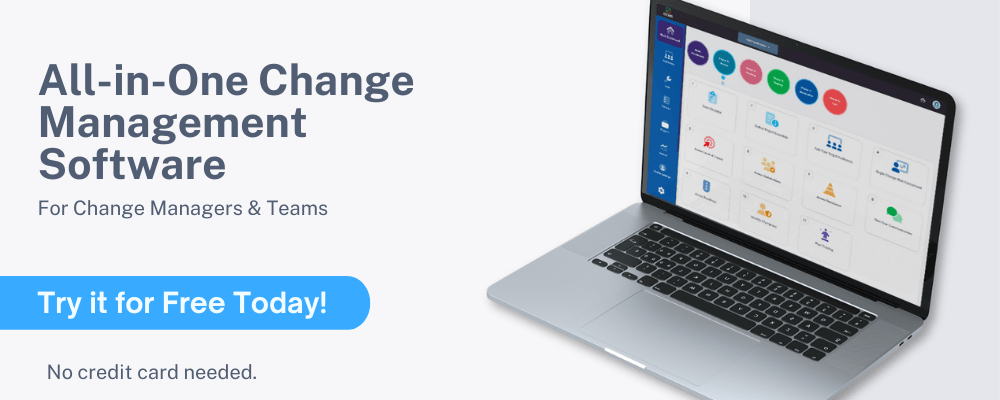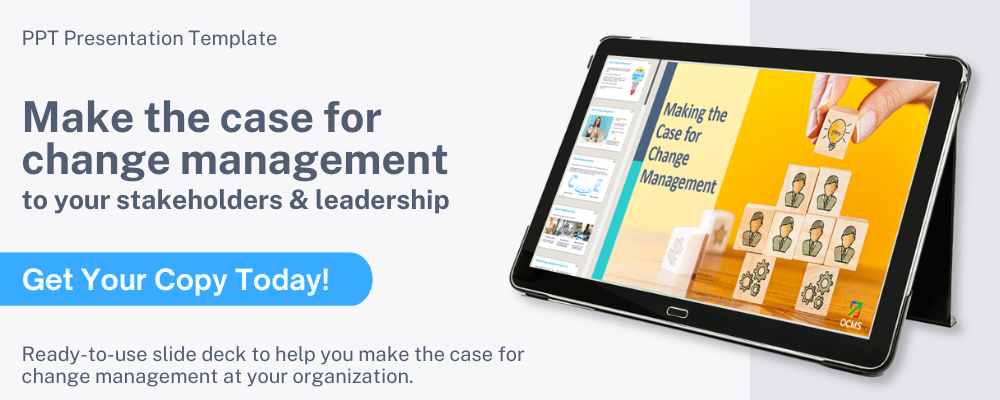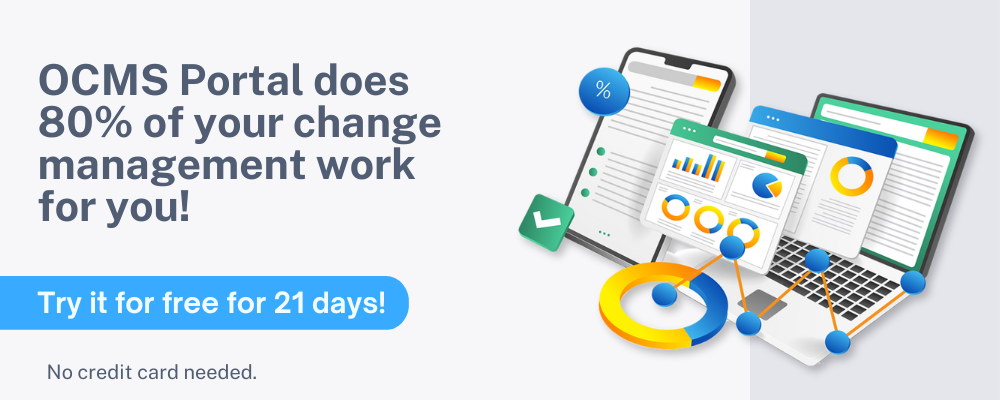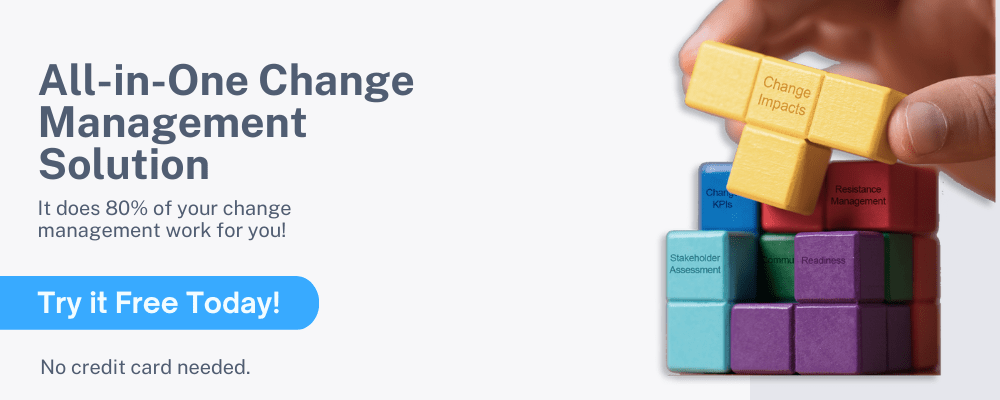The Challenge In Helping Employees Deal With Change In The Workplace
Welcome to your indispensable roadmap for navigating the tumultuous seas of workplace change, where uncertainty meets opportunity and resilience is the key to flourishing amidst upheaval.
This comprehensive guide is designed to equip you with the strategies and insights you need to not only cope with change but also thrive amidst it. From the subtle shifts in daily routines to the seismic transformations of corporate restructuring, we delve into the heart of change dynamics, uncovering the secrets to harnessing its power for personal and professional growth. Get ready to embrace change, conquer challenges, and emerge stronger than ever before in your career.
Story Highlights
|

Live and Breath Success by Knowing How to Cope with Change in the Workplace
Change is a constant in the workplace, often unsettling established routines by introducing new software tools or additional responsibilities. This upheaval triggers varied reactions, including fear, frustration, and confusion, among employees. While organizations undergo inevitable changes, employees often feel powerless to resist, compelled to accept new norms.
Helping employees deal with change in the workplace fosters a culture of adaptability and resilience, which can lead to increased innovation, improved performance, and a competitive edge for the organization in the dynamic business landscape.
A Diverse Workplace: How to Deal with Change at Work
Individual responses to change differ, with some resisting while others embrace it. This divergence is influenced by how effectively the change is communicated and managed, as well as the employee’s attitude towards it. While resisting change is natural due to the emotional investment in established routines, understanding the necessity of change is crucial in navigating it effectively.
Fearless Adaptation: Overcoming Struggles with Change at Work
Understanding how to cope with change in the workplace is one part of the battle for maintaining productivity and morale during times of transition. Effective coping with change involves introspection to understand one’s emotional reactions. Anxiety or resistance often stems from fear of incompetence or job insecurity. Addressing these underlying fears through communication and support is vital for fostering acceptance of change.
One Team, One Dream: Navigating Change Together
Understanding how to deal with change at work is essential for both personal growth and professional development, as it helps individuals adapt to new challenges and opportunities in their career paths. Transitioning through various stages, from acknowledging endings to embracing new beginnings, requires proactive engagement. Employees must express concerns, seek clarification, and maintain an open mind throughout the transition process. Engaging with colleagues and supporting each other fosters a more positive outlook towards change.
The Most Helpful Tips for Dealing with Change in the Workplace | Everything You Need to Know
Sometimes it seems that as soon as you get into a comfortable routine at work, something ends up changing and upsetting it. You may be asked to use an entirely new software tool or have to take on additional responsibilities.
Dealing with change at work isn’t always easy. The first reaction many people have is fear, frustration, confusion, or a combination of all of the above.

Dealing with Change in the Workplace
Organizations will inevitably go through changes, and those changes often have a big impact on employees. When managing transition in the workplace, staff can often feel powerless and that they have no choice but to accept the new way of doing things.
But not everyone looks at change the same way. Just as you’ll find people resisting change in the workplace, you’ll also find those embracing change at work. What’s the difference?
It’s often a combination of two things:
- How well the change team communicates about and handles the change project
- The employee’s own attitude about the change.
While you may not be able to stop a transition that impacts your daily routine, there are certain tips on how to manage change at work that can help you feel better about it and handle the process with less stress and anxiety.
See Also: Prosci’s Change Consultancy Review
How to Cope with Change at Work
William Bridges, developer of Bridges Transition Model for change, said that “We resist transition not because we can’t accept the change, but because we can’t accept letting go of that piece of ourselves that we have to give up when and because the situation has changed.”
Understanding that emotional connection to any type of change is key to managing change at work.
Change means an ending to the way things are being done, and it’s not just a change to a process, it’s a change that can be very personal because it means letting go of habits and behaviors that may have become second nature. It means going into a less comfortable zone of having to relearn certain ways of doing things.
Handling change in the workplace involves being self-aware of the feelings you have about a change and going beyond the initial reaction you have about a change into WHY the reaction is happening.
For example, when you hear about a change at work that’s going to impact your job, you might immediately have a feeling of anxiety that causes you to want to reject anything people try to tell you about the change.
You might say, “Things were fine the way they were” or “I’m already doing everything I can, I can’t do anymore.”
If you dig down into the underlying emotions of why you’re feeling that way and not handling change at work well, you might admit that you’re afraid.
Afraid you can’t learn the new process or afraid you can’t keep up with new responsibilities and will end up being replaced.
Those feelings are completely natural and ones that any change management team will expect and know how to address.
Going Beyond the Emotions of Dealing with Change at Work
Once you know the emotions driving your anxiety, anger, or fear about a change, you can start to ask the right questions that will help to ally fears or at least prepare you for accepting change in the workplace that’s going to happen no matter what you’re feeling.
Some of the questions to ask if you’re worried you can’t learn proficiency in the new process are:
- What type of training will I receive?
- How long will I have to learn the new process before go-live?
- Will I have support after go-live if I get stuck?
Often, the resistance to embracing change at work comes from the inability to move beyond all those feelings that come from a loss of the old habits and behaviors into truly understanding the benefits of the change.
For example, a change that initially sounds like it’s going to mean more work added to your already full day might end up saving you time because of a new automated process being used.
It’s important to keep an open mind when managing the transition in the workplace and to own your own attitude and openness (or lack thereof) about the change.
Don’t Miss: Kurt Lewin Change | All You Need to Know
How Do You Deal with Unwanted Changes?
If you’re one of the lucky ones, managing change at work will be easy, and you’ll be excited about the transition to come. But that’s typically the exception, at least in the early stages of a change.
The job of the change management team is to communicate the vision or need for the change clearly to those impacted and help them understand why it will benefit them and the organization.
While organizations as a whole may see a change from the top-down as a benefit to the organization, thus all employees should also benefit. That’s not always the case.
Change management models like ADKAR, teach organizations that change actually happens from the bottom up. People in an organization need to change by successfully coping with change in the workplace for that change to bring the desired results.
Why are we explaining this?
Because it’s important for you to understand your role in the change and how vital it is. Understanding can help you know better how to manage change at work, even for unwanted changes.
How Do You Cope with Change That’s Unwanted?
Not all change is going to be welcome or wanted. Your company may be cutting costs and thus eliminating some positions, meaning everyone left has to pick up the slack. A change may also mean you have to stop using the software you really loved and learn an entirely new one.
Handling change in the workplace involves understanding how to make things okay for you even if you’re not happy about a change. Here are a few ways to do that.
Understand What You Can and Can’t Control
One of the most frustrating parts of dealing with change in the workplace can be the lack of control you have over your own job. If your organization is deciding to merge with another company, that change is something that you can’t control.
In some cases, you may have areas of input where you can at least give an opinion about a new process or workflow. But in many cases, employees have little control when it comes to an organizational change that’s already planned.
You ultimately are left with two choices when you can’t control the change, you can choose to move to embrace change at work (even if it’s unwelcome initially) or you can be miserable, complain about it, and resist it, which isn’t going to make for many great days at work.
Would you like to know more about OCM software solutions offered by OCMS? Looking for an overview of the OCMS Portal? Please reach out and let us know. We’re happy to help!
Make the Change Your Own
Feelings of resistance about handling change at work often come because change is thrust upon us, and we feel like we have no say or possibly weren’t even considered when the change was decided.
Instead of feeling negative about dealing with change in the workplace, find something about the change you can make you own and feel in control of.
It can be something as simple as exploring the personalization options in the user interface of a new cloud tool. It could also mean suggestions for new automation for everyone to use that you discovered on your own while going through training.
Separate Productive vs Non-Productive Conversations
When you’re being forced through an unwanted change, you’re most likely going to want to talk about it. To your boss, your co-workers, to anyone that will listen.
But, dealing with change at work in the right way, means knowing which conversations will be productive and which won’t, and choosing wisely. And by productive, we mean to you personally and to your happiness and sense of well-being at work.
If you spend an hour complaining to a colleague about a change, it’s not going to help you in managing the transition in the workplace or change your situation. It’s just going to keep you in a bad negative place and drag down your co-worker.
However, if you have a sincere conversation with your boss about how the change is impacting you and your work, then there is a chance that solutions might be found that could help make things better. That would be a more productive conversation.
Related: The Best Strategies for Managing Change in Healthcare
Accepting Change in the Workplace
There are certain stages that employees need to pass through in order to get to a place where they’re accepting change in the workplace.
While the change management team is trained to help you get there, it’s also up to you to be open to managing the transition in the workplace, ask questions to help alleviate your initial emotional response, and get yourself to a place of embracing change at work.
So, how do you get from a place of resisting a change that you never asked for to accepting change in the workplace without all those bad feelings?
Here are the main stages illustrated in the Bridges Theory and some suggestions on how to get through each one.
Endings Stage
When you first learn of a change, some of the common emotions you’ll feel are loss, anger, denial, confusion, and frustration. If you don’t get past this state when managing change at work, it can be a problem for your own sense of well-being as well as your work performance.
Here are some tips for moving past the ending stage of change:
- Understand Your Feelings: Understand why you’re feeling what you are feeling. Some reasons may be valid, such as a past change project that went poorly. Others may be unfounded, like the fear you can’t learn the new process before you’ve even had a chance to be trained.
- Share Your Concerns: Don’t keep your concerns bottled up, now is the time to get more information about the change project. Information can often help alleviate concerns or, at the very least, make you feel less powerless.
- Keep an Open Mind: Instead of prejudging what you think may happen, or running negative scenarios through your head, keep an open mind about coping with change in the workplace. Focus on some positive “what if” scenarios about what the change could mean.
Neutral Zone Stage
When you’re in the “neutral zone,” it means that you’ve moved past those initial negative and resistant feelings about how to manage change at work. You’ve opened your mind to the possibility that the change might actually make your work life better.
This stage can bring a mix of different types of emotions on all sides of the spectrum. You may be excited to attend training for a new process at the same time as feeling anxiety and some fear as you ramp up the learning curve.
Here are some tips for moving through the neutral zone to a less uncertain place:
- Ask Questions: When we don’t know something, our minds often imagine the worst possible outcome. Ask questions throughout the change process as you’re learning the new ways of doing things, so you have the information for positively handling change in the workplace.
- Help Others: One way to stop feeling anxious about how a change will impact you is to help a co-worker who may be feeling the same fears you are. Offer help with questions or to have a study session together on the new process to make handling change at work more fun.
- Explore the Change Potential: If the change will be impacting your daily duties, instead of feeling powerless, explore how you can incorporate the change in the way that meets your company’s needs but also gives you a little control. Finding creative ways to incorporate the transition can help make dealing with change in the workplace more empowering

Tips for Dealing with Change at Work
Contact us if you have any questions or feedback about this guide on struggling with change at work. Also, let us know if you have additional strategies on helping employees deal with change in the workplace that you would like listed on this page to help other change management practitioners.
New Beginnings Stage
The new beginnings stage typically happens once you’ve hit the go-live date for the change and are now doing things the “new way.” This can lead to feelings of relief and happiness that you’ve made it through, but you may still have occasional feelings of confusion if there’s a lack of sustained support.
Here are some tips for fully embracing the new beginnings stage:
- Ask for Help: Change management best practices include providing support to help sustain a change after the go-live date. Don’t think you have to struggle with something that may have come up after the change went into effect, ask for help managing change at work when needed.
- Optimize and Explore: Once you’ve gotten the hang of the new way of doing things, take some time to explore how you can further optimize your new workflow and be excited about it.
- Create Your New Habits: Letting go of old habits is much easier when new ones are adopted to replace them. Be purposeful when dealing with change in the workplace by creating habits around the new workflows that can become your new comfortable routine.
Popular Article: Change Management Training
How Do You Embrace Change at Work?
Accepting change in the workplace can come more easily if you adopt a positive attitude and look for ways to be part of the change project.
Not only does this give you more of a sense of control instead of feeling powerless, but it can also help you get past those feelings of negativity surrounding dealing with change at work.
Become a Change Champion
Embracing change at work for many can be volunteering to be part of a Change Champions Network. This is a group of employees that a change management team will depend upon to help communicate about the change and drive support for the change by answering questions from their colleagues.
It may seem like a far stretch to go from feeling blindsided by a change and barely coping with change in the workplace to being a change champion. But it can be a step to help you in embracing change at work and managing transition in the workplace with less anxiety.
You’ll feel more empowered when dealing with change in the workplace due to the additional communication you’ll have as part of the champions network and will feel like part of the change management team which can transition your mental perspective on the change from “HAVE to” to “WANT to.”
Look at Things from a Different Perspective
Sometimes, all it takes is one conversation to completely change an attitude about a change from one that’s resisting to one that’s dealing with change at work with support and excitement.
It’s easy to get caught up in what this change means to “Me.” How it’s going to disrupt your daily routine, cause stress, and possibly make you feel overwhelmed. But if you stop to look at things from a different perspective, it can help you in accepting change in the workplace.
For example, if you ask about the reason for the change, you might find out that your employer actually was trying to automate things so they could free up employees from manual tasks. Or a vendor may have gone out of business, requiring an unplanned change in the way a production process was done.
What is often the case with people dealing with change in the workplace is that once they realize the motivation for the change, it will often lead them to embrace change at work rather than resisting it.
Read More: What’s Included in the Change Manager Job Description?
Conclusion: Coping with Change in the Workplace & Embracing Transition
Not all change is welcome or exciting, but the things that you choose to do when dealing with change at work can make a big difference in your overall happiness, anxiety, and stress during and after the transition.
While resistance to change is natural, especially because change involves an ending of some type, it’s important to get past that initial resistance to a place of accepting change in the workplace.
Looking for ways to be involved with the change project and asking lots of questions can be methods to allay fears and help you in embracing change at work instead of dreading it.
Remember to keep an open mind, explore why you’re feeling the way you are about the change, and look to co-workers and change managers for positive support.
While dealing with change in the workplace can be challenging, if you stay positive, accept what you can’t control, and control what you can, it can be much less stressful. You may also just find, once you give it a chance that the change actually makes your working life better.
Note: Content on OCM Solution's ocmsolution.com website is protected by copyright. Should you have any questions or comments regarding this OCM Solution page, please reach out to Ogbe Airiodion (Change Management Lead) or the OCM Solution Team today. OCM Solution was previously known as Airiodion Global Services (AGS).
Images: https://www.pexels.com/photo/three-woman-sitting-on-white-chair-in-front-of-table-2041627/, https://www.pexels.com/photo/woman-sitting-on-chair-while-leaning-on-laptop-3791136/, https://www.pexels.com/photo/photo-of-woman-using-laptop-3891135/






